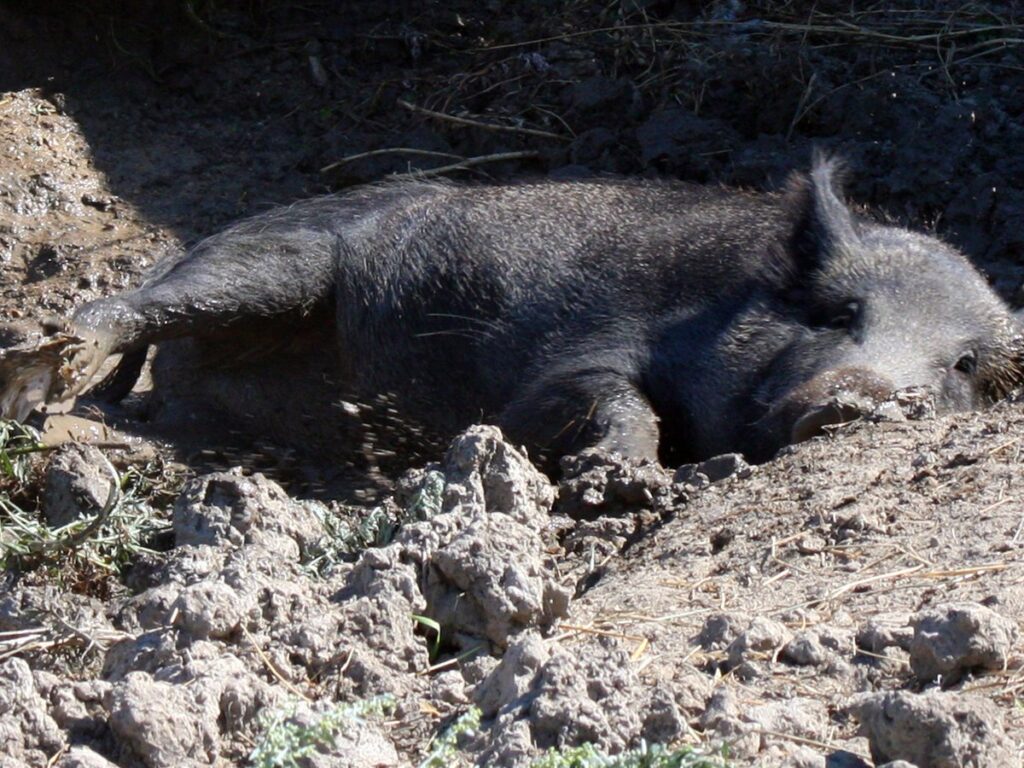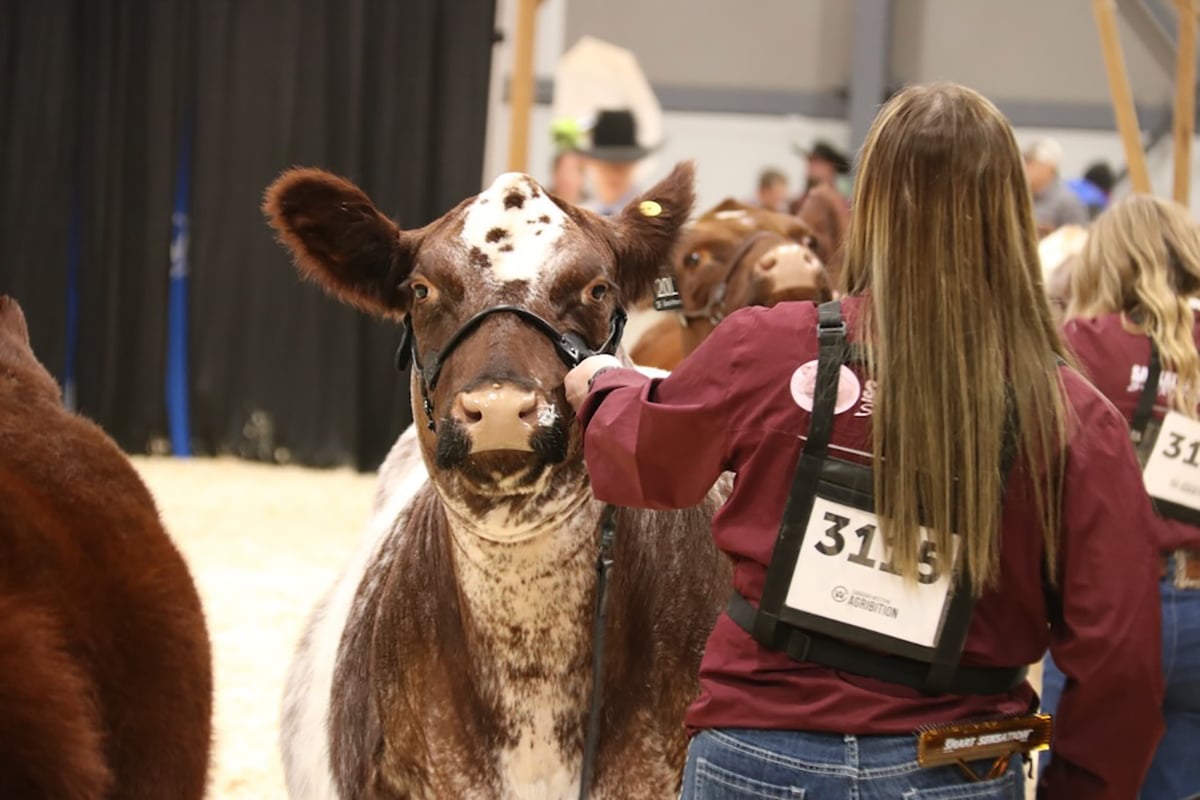Wild boar called major disease risk in Alberta

The fight continues against the invasive spread of wild boar in Alberta and its inherent disease risk and damage to the agriculture sector.
Native to Eurasia, Southeast Asia and North Africa, wild boars made their way to Canada in the 1980s and 1990s when agricultural producers became enamored with raising exotic species for profit alongside the likes of elk and ostrich.
Breaking containment, some escaped into the wild and hybridized with domestic pigs. There are just 13 remaining wild boar farms in Alberta.
Read Also


Agribition posts strong financial results, elects executive
Canadian Western Agribition posted a profit of nearly $75,000 on operations in 2024, organizers said at the show’s annual general meeting earlier this month.
“They are one of the most widely spread mammals globally. They are also invasive in the Prairie provinces in Canada, including Alberta,” Mathieu Pruvot from the University of Calgary said during a wild boar ecology presentation at a pork producer meeting in Lethbridge.
“They are very adaptable. They will settle pretty much anywhere and they thrive on any type of food. They have high reproductive rates that make them very prolific in the domestic swine producing context.”
The animals trample ecosystems and eat crops and wildlife such as ground-nesting birds, amphibians and salamanders. There is also the risk that they might spread various diseases, including African swine fever, which has swept across Europe, where it was first confirmed in 2014.
“With all this, there is the cost of control. This costs $2.5 billion annually to the U.S. agriculture in control and damages. We definitely do not want to get to that point,” said Pruvot.
The World Organization for Animal Health tracks 84 pathogens for animal disease, 39 of which can be hosted by wild boar. Of those, 34 can be transmitted to other species, including humans and domestic livestock.
Wild boars are considered “at large” and are a provincially regulated agricultural pest.
Pruvot’s project team set out to understand the species’ migration patterns, interactions with livestock and disease transmission risks.
Mapping over a 20-year time period up to 2023 shows wild boars clustered close to boar farms and in parkland areas that are the “best of both worlds” with both cover and access to food.
Spread throughout the province, they are primarily found in north-central Alberta, particularly in a stretch from Whitecourt to Lloydminster, according to Hannah McKenzie, a wild boar specialist with Alberta Agriculture and Irrigation.
“They basically like to be at intersections of forest and crops,” said Pruvot.
“The further away we get from boar farms, the less wild boar we are likely to see.”
Exact numbers are unknown, but they are estimated to be in the thousands.
Pruvot’s project set up 84 randomly placed cameras east and west of Edmonton.
Studying the numbers of communal batches of wild boars shows high reproductive potential during winter in January-February and during spring in June. Numbers are curtailed by a low survival rate.
“Survival at zero to four and four to eight months is decent at about 60 per cent, but it really plunges for the later age categories. Four to eight and eight to 12, we are down to 30 per cent survival,” said Pruvot.
On average, 2.2 animals survive to adulthood per litter.
“Half of them will be male, so replacement of females is not very good,” Pruvot said.
“This might explain why we are not seeing a huge expansion of these wild (boars). They are maintaining their population but do not seem to spreading out from their core areas.”
An online survey was distributed across the province to veterinarians, feed mills, agri-stores and producers in the pork, beef and milk sectors to gauge wild boar interactions with livestock. Of the 231 responses, nine farms reported wild boar occurrences. Working with Alberta Pork, 85 swine producers in 37 counties received a camera trap to capture a wild boar.
One of the critical pieces the researchers are trying to figure out is how potent a vector for ASF wild boar might be in Alberta and the rest of Western Canada.
In areas where the disease is endemic in wild boar, research shows it can often be maintainted in a population in cycles of transmission between live wild boar and infected carcasses that remain infectious on the landscape for a sigificant period of time.
“From a preventive perspective, it is really important to understand that if there was an incursion of ASF, how long would carcasses persist on the landscape and how often would wild pigs be in contact with them,” Pruvot said.
Less exotic diseases can also be transmitted between domestic pigs and wild boars. Pruvot showed a sample of 120 wild boar that were trapped and removed, with almost all of them harbouring E. Rhusiopathiae, the bacterium that causes erysipelas. There was a smattering of four per cent or less of the sample that contained the viruses causing influenza A, pneumonia and porcine reproductive respiratory syndrome.
“What was a bit more of a surprise was porcine circovirus, where we found 30 per cent prominence,” said Pruvot.
It’s a viral pathogen with a high mutation rate leading to different genotypes that can cause a wide array of health problems in pigs.
With all the testing, it became abundantly clear to Pruvot’s team that as wild boars feed on other wildlife, they pick up viruses in other areas across species.
“What we know is that whatever will circulate in the area, (wild boars) will pick it up through their scavenging behaviours with other animals,” he said.
Trapping initiatives are hoped to remove wild boar faster than they are repopulating.
As well, GPS collars are being deployed on some of the animals to track their movements, behaviour, preferred habitat and social behaviours to make trap placement more effective.
Wild boar farms in Alberta are inspected annually to ensure they meet minimum containment standards.
The Alberta Invasive Species Council launched a Squeal on Pigs awareness program in 2021 for reporting wild boar sightings by emailing wildboar@gov.ab.ca or calling 310-FARM or local municipalities. In three years, reported sightings of wild boars have doubled, and as of March 2024, trappers had killed 314 boars as a result of the program.
Last 2024, Alberta Pork wrote the Alberta agriculture minister asking for a ban on wild boar and sport hunting of the animals or legislative changes to prohibit the marketing or ownership of wild boar in the province.
The minister’s office responded that protecting the livestock industry is important, but the government would not be pursuing regulations that might shut down Alberta businesses.
Wild boar bylaws have been enacted in 22 of 69 rural municipalities in Alberta, including listing wild boar as a prohibited animal, limiting the expansion of existing boar farms and banning the establishment of new wild boar farms.
Source: producer.com


